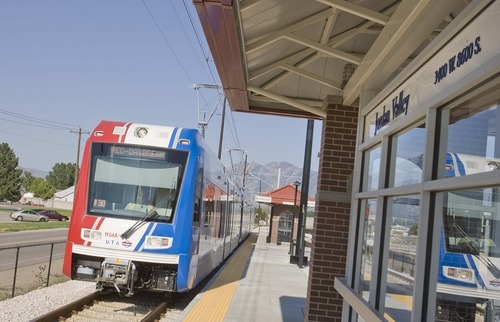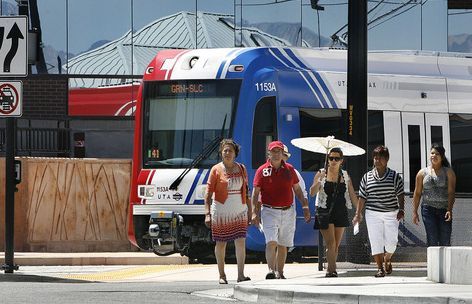This is an archived article that was published on sltrib.com in 2011, and information in the article may be outdated. It is provided only for personal research purposes and may not be reprinted.
After two months of operation, ridership on the new West Valley City and Mid-Jordan TRAX extensions has grown by about a third — but still has not hit original projections.
Last week, the new stations along the 5.1-mile West Valley City line had an average of 4,800 weekday riders board there, according to UTA data requested by TheTribune. That is up by 28 percent since its opening week, but still just under the original projection of 5,000 riders per weekday.
The 10.6-mile Mid-Jordan line between Murray and the Daybreak area is further behind projections.
Last week, its stations had about 6,500 riders on average board there during weekdays. That is up by 31 percent since the opening week two months ago, but still far under the originally projected 9,000 riders per weekday.
"The growth that we have seen over the past couple of months as we opened is pretty much what we expected," said UTA spokesman Gerry Carpenter.
"We knew there would be a transition period where people would move from their traditional mode of commuting to trying out TRAX to becoming a regular rider. This is a growth trend that we expect to continue," he said.
Carpenter added that special events — such as Salt Lake City hosting both LDS General Conference and a University of Utah football game at the same time last Saturday — attract many new riders for the first time, and may persuade some of them to change from driving to transit.
During special events, "They want to avoid parking. They want to avoid congestion in the downtown area or up at a game," Carpenter said. "They try it out once and realize that this is a pretty convenient and reliable way to travel. As they become more comfortable and familiar with it, they are more likely to make it a part of their regular routine."
On Saturday, with conference and the football game, the overall TRAX system had 60,000 boardings. That was 65 percent higher than the Saturday of General Conference a year earlier.





